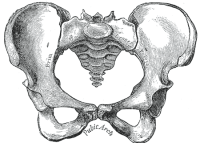I recently shared a video demonstrating cross plane or cross body movement. The sequence is a variation of common physical movements in yoga put together in a different way including a lunge, twists and standing balance – then moving through that sequence swapping the position of the legs and arms. But what is cross plane or cross body movement and why should you care?
When we are talking about physical movement of the body there are three main planes of movement (sagittal plane, frontal plane and transverse plane). This study guide from the BBC defines a movement plane as “an imaginary flat surface running through the body.” Basically it’s terminology that helps people talk about movement.
In terms of movement:
- Moving side to side occurs in the frontal plan – like side lunges or stepping sideways
- Moving forward and backward occurs in the sagittal plane – like lifting a knee, bending forward or a sun salutation
- Twisting or turning occurs in the transverse plane
Most cross body movement typically involves moving opposite arm and leg across the sagittal plane (sometimes called lateral plane). At a simple level, imagine while standing that you lift your left knee and reach your right hand across to touch the top of the knee – opposite arm and leg are moving, and your arm is reaching across your body.
There are many names for this type of movement – cross crawl (as this movement pattern is how we crawl on the ground), cross patterning, cross body patterning, cross lateral movement and any combination or variation of those words. I like cross body because it sounds like it is – moving across your body.
So why does it matter? The right and left hemispheres of the brain each influence movement of the right and left side of the body (though we are still discovering just how this works). Coordinating both sides of the body helps build and reinforce the connections between the right and left hemisphere:
Performing this movement builds the bridge between the right and left hemispheres of the brain, allowing for electrical impulses and information to pass freely between the two, which is essential for physical coordination as well as cerebral activities, such as learning language, reading, and hand-to-eye coordination.
From yourtherapysource.com
In addition, the complexity of movement challenges your spacial and body awareness (proprioception) and can improve your balance. Read this article for information about the benefits physically and mentally.




